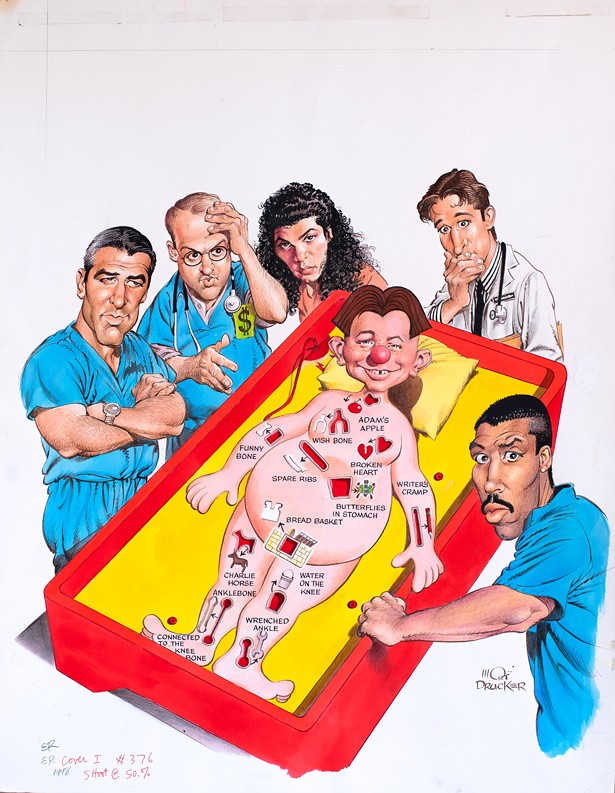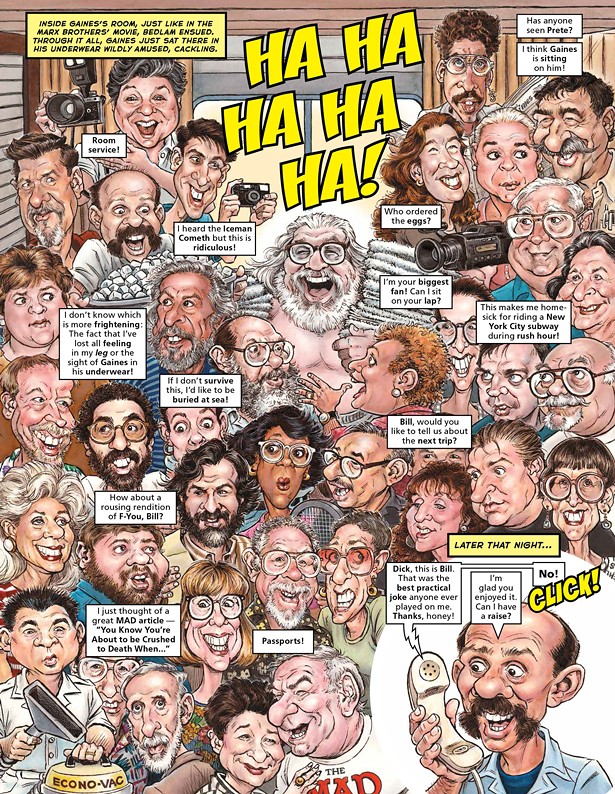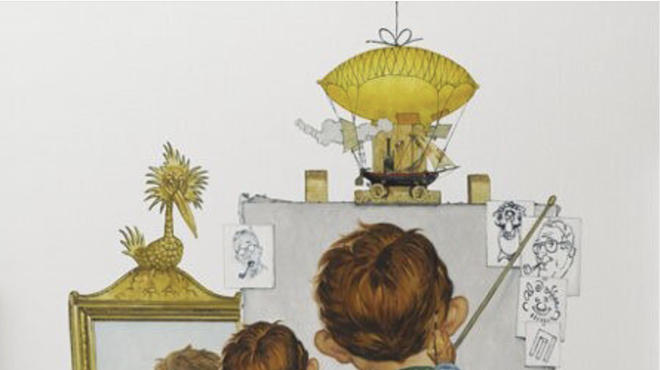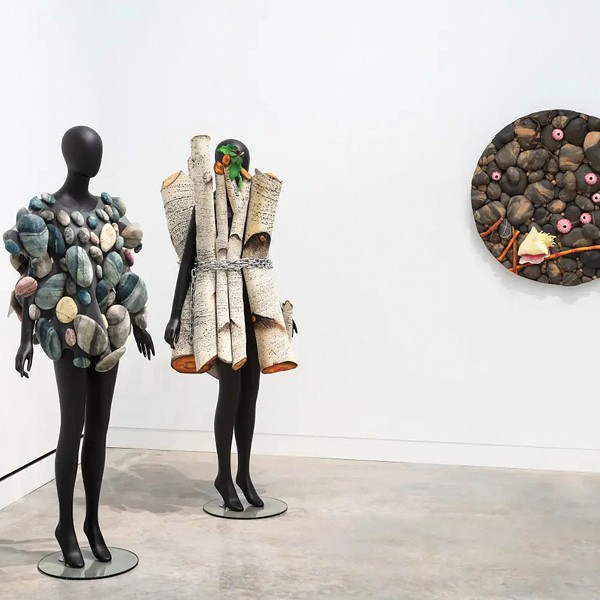Mad magazine delivered more than 60 years of humor, satire, and stupidity during its run between 1952 and 2019, peaking in popularity with two million subscribers in the early 1970s. After its reformatting from a comic book to a magazine in 1955, Mad never really changed its approach and identity, appealing to a readership that was mostly pre- and early adolescent and largely (but far from exclusively) male. Mad's artists and writers—aka "The Usual Gang of Idiots"—were guides who made fun and made sense of the adult world without talking down to their young audience.
The publication's frantic, anarchic, and technically sophisticated visual energy will be on full display at The Norman Rockwell Museum's summer blockbuster, "What, Me Worry? The Art and Humor of Mad Magazine," on view from June 8 through October 27. The show includes over 250 original illustrations and cartoons across seven decades. Also on view is Mad memorabilia such as the official Mad straitjacket, Mad hats, a statue of Alfred E. Neuman, and a Gulf War chess set.
"I think you could boil all of Mad humor down to one word—'wiseass,'" says exhibition cocurator Steve Brodner, a preeminent satirical cartoonist. At the time Mad started in the 1950s, there was a tremendous amount of satire reacting to what Brodner characterizes as the conservative "monoculture that was dominating television and advertising. Mad did more about advertising than about any other topic. We all wanted to see the guy descending from the sky in that Hertz commercial crash though the roof of the rent-a-car—and Mad gave it to you in features like 'Scenes We'd Like to See.' Why did you want to see a scene like that? Because we wanted to break it up and shake it up because we found the culture dreary and drab and really, really stupid. And Mad was telling you, 'Yeah, kid, you're right—it is stupid."
The art of Mad was "the graphic equivalent of slapstick," in the words of Judith Yaross Lee, coeditor of a scholarly appraisal of the magazine, Seeing Mad. The magazine's pages teemed with random secondary jokes packed inside a story (and embedded in the margins by the legendary cartoonist Sergio Aragones), which made Mad eminently re-readable—there was always something you had missed.
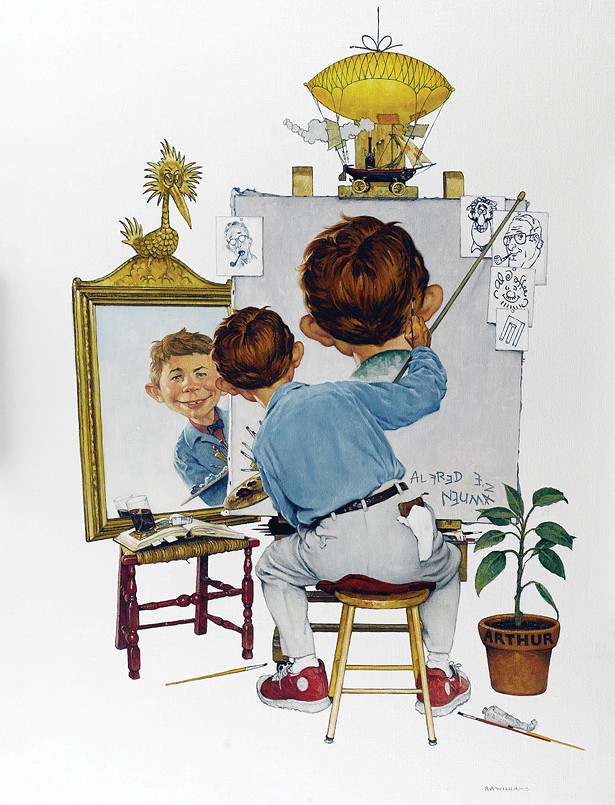
Brodner says that the great satirical cartoonists of Mad—Mort Drucker, Al Jaffee, and Don Martin, to name a few—"understood that space needed to be taken advantage of for storytelling," he says. "Norman Rockwell was the king of this. If you examine any Rockwell painting, you will see the same level of attention paid to a tiny comb with little blonde hairs coming out of it on the dresser as to the girl who's trying on a dress, because he knows there is storytelling value in that."
Moreover, explains exhibition cocurator Stephanie Haboush Plunkett, "Rockwell himself was a humorist. He could do very serious works, but he was also extremely funny." Some of the master's work from the Norman Rockwell Museum collection will also be on view to illustrate the point.
Plunkett says that the work will be presented chronologically and there will also be a section on the long history of the face of Mad, Alfred E. Neuman, whose visage started to appear in advertising as early as the 18th and 19th centuries before being appropriated by the magazine's original editor, Harvey Kurtzman in 1954. The exhibition ends with an installation on the incalculable influence of Mad on popular culture, including television shows like "The Simpsons," "Saturday Night Live," and "Mad TV," which over 14 years starting in the 1990s introduced the magazine's sensibility and artists to new generations of fans.
The exhibit thus "has this element of both freshness and nostalgia," says Plunkett. In her view, the magazine's approach to comedy has relevance today. "Mad pushed back against young people's acceptance of some of the things they were told, whether by their parents, the government, or in the things they read. Mad taught people to question."







![Spy vs. Spy [Museum], Peter Kuper, illustration for MAD, mixed media stencils, spray paint, watercolor, ink, colored pencil, and collage, 2007.](https://media2.chronogram.com/chronogram/imager/what-me-worry-the-art-and-humor-of-mad-magazine/u/magnum/20885493/peter_kuper_spy_vs._spy_museum_2007.jpg?cb=1719248086)
